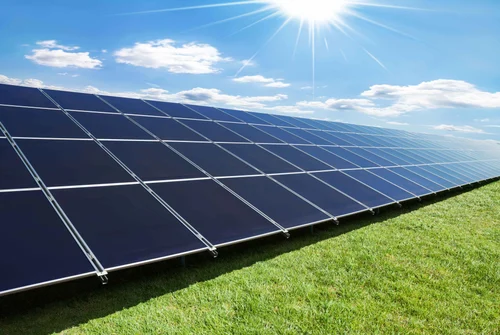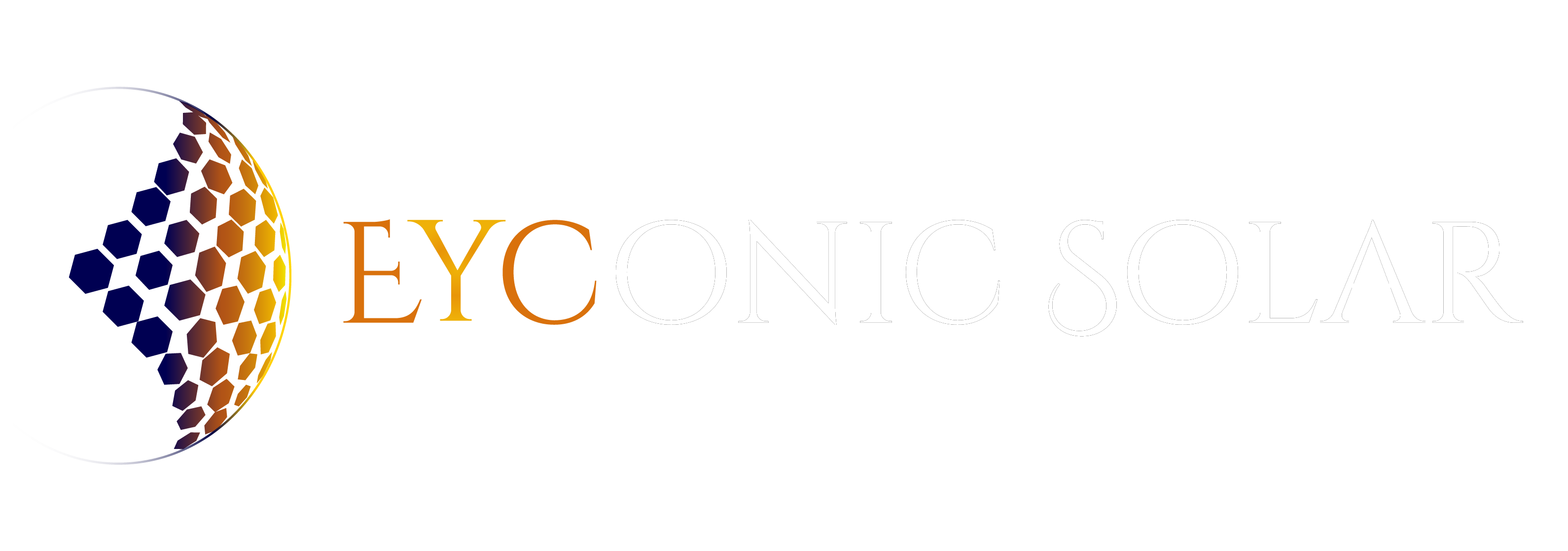A floating solar power plant, also
known as floatovoltaics, is a solar energy system installed on water bodies
such as lakes, reservoirs, ponds, or even the sea. These systems are gaining
popularity due to their ability to save land space and improve solar panel
efficiency. Below are the complete details of a floating solar power plant:
Components of a Floating Solar Power Plant
1. Solar Panels (Photovoltaic Modules):
- Convert sunlight into direct current (DC) electricity.
- Made of monocrystalline, polycrystalline, or thin-film materials.
- Efficiency ranges from 15% to 22%.
2. Floating Structure:
- Supports the solar panels on the water surface.
- Made of high-density polyethylene (HDPE) or other corrosion-resistant
materials.
- Designed to withstand water conditions, including waves and wind.
3. Inverters:
- Convert DC electricity from the solar panels into alternating current
(AC) electricity.
- Central inverters or string inverters are commonly used.
4. Anchoring and Mooring System:
- Keeps the floating structure in place.
- Prevents the system from drifting due to wind or water currents.
5. Transformers:
- Step up the voltage of the generated electricity for efficient
transmission to the grid.
6. Cables and Connectors:
- Connect the solar panels, inverters, and transformers.
- Waterproof and UV-resistant to withstand outdoor conditions.
7. Monitoring System:
- Tracks the performance of the solar plant in real-time.
- Includes sensors, meters, and software for data analysis.
8. Substation:
- Connects the floating solar power plant to the grid.
Working Principle
1. Solar panels absorb sunlight and
generate DC electricity.
2. The DC electricity is sent to
inverters, where it is converted into AC electricity.
3. The AC electricity is stepped up
by transformers for transmission to the grid.
4. Excess electricity is fed into
the grid, and the system draws power from the grid when needed.
Advantages of Floating Solar Power Plants
1. Land Conservation: Utilizes
water bodies, saving valuable land for other purposes.
2. Improved Efficiency: Water
cooling effect can increase solar panel efficiency by 5-10%.
3. Reduced Evaporation: Covers
water surfaces, reducing evaporation and conserving water.
4. Algae Control: Blocks
sunlight, preventing excessive algae growth in water bodies.
5. Scalability: Can be installed on various water bodies, from small ponds to large reservoirs
Additional information
1. Higher Installation Costs: Requires specialized equipment and materials.
2. Maintenance Challenges: Accessing and maintaining the system on water can be
difficult.
3. Environmental Impact: May
affect aquatic ecosystems if not planned
carefully.
4. Weather Risks: Vulnerable
to
extreme weather conditions like storms and
floods.
- Reservoirs and
dams
- Lakes and
ponds
- Wastewater treatment
plants
- Industrial water
bodies
- Coastal areas (with proper
design
for saltwater resistance)
1. Site Assessment: Evaluate
the
water body's depth, water quality, and environmental
impact.
2. Design and Planning: Determine
the optimal layout and anchoring system.
3. Floating Structure
Installation: Assemble and deploy the floating
platforms.
4. Panel Installation: Mount
the
solar panels on the platforms.
5. Electrical Connections: Connect the panels, inverters, and transformers.
6. Testing and Commissioning: Ensure the system is functioning correctly.
Many countries offer incentives
for
floating solar power plants, such as:
Subsidies: e.g., in India,
the
Ministry of New and Renewable Energy (MNRE) provides financial
support.
1. Aquatic Life: Proper
planning
is required to minimize impact on aquatic
ecosystems.
2.Water Quality: Ensure that
the
materials used do not contaminate the water.
3. Recycling: End-of-life solar panels and components should be recycled responsibly.



.webp)

